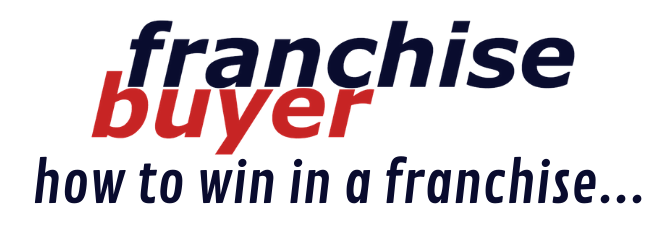
In search of Retail’s Holy Grail How to discover greater profits in business
“Well have you heard about the great crusade? We ran into millions, but nobody got paid.”
These prophetic words to the Hunters and Collector’s famed song could well apply to one of the most critical inputs to speciality retail success. It’s always interesting to see that it’s not lack of profit that influences the “business fitness’ of a business, it is the cash flow, and the “holy grail of retail” is to understand the relationship between sales, margin and closing stock. In fact, at our “Fit For Business” presentations or consulting diagnostic work we get quickly to this area because it’s a classic KPI of the health of a retail business.
These three critical inputs are simply sales, margins and closing stock levels. Time and time again we see that stock levels the ‘poor’ cousins of the three yet they command the single largest investment a retailer makes. How can your business replicate the world’s best retailers, accurately managing your stock levels - thereby avoiding unplanned markdowns along with maximising cash flow and profits, while others just buy what they think will sell, then cross their fingers and hope for the best? How many really understand the significant impact that a well-managed stock position will have on increased sales, liquidity and profitability?
In Search of the Retail Holy Grail.
Let’s explore the factors that separate the “Business Fit “ performers from the ‘also-rans’. In this area. Our retail performance for each period varies depending on a number of key contributing factors. These factors can include economic confidence, weather, competitive environment and managing turnover. Recording and analysing factors influencing these key events in your retail diary is the first important step to take.
Whilst we can’t influence the weather, and our inventory at this time of the year has most likely been purchased, any opportunity
to maximise stock profitability now depends on good management. Such management is made a lot easier by good systems (both computerised and manual) and the discipline of a market leader who measures sales, margin and stock position in both detail and composition.
Working Your Systems for Profit
Here are some of the tools that you will need to maximise your stock management effectiveness (and therefore profit!). Have a Product Budget: Formal product management often works within a concept known as Open to Buy (OTB). Plans for our performance of product groups are noted in terms of dollars and unit sales, with corresponding levels of purchases, discounts and delivery periods etc.
If sales are trending up, you need to buy more. Discounts can be used to increase our units sold in order to reduce our closing stock target where applicable. A good OTB system will balance all these factors – with a view to assessing if the retailer is heading toward their planned closing stock position – even though that position may still be weeks or months away. Whether you run a formal OTB via a retail management system, computer spreadsheets or even manually the key is to ensure that you are now heading towards the planned closing stock positions you want.
If you are a retailer who finishes a period overstocked - stock not sold and left behind - you can be assured that this critical trading period will damage your cash flows and lead to unplanned discounts. This often leads to ‘flow-on’ effects, which could leave you looking stale for the start of your new trading year and new season purchases being made out of the bank account rather than positive cash flow.
Conversely, too little stock means you have probably missed out on sales and potential customers have been forced to shop at your competitors.
Finding the Right Stock Levels to Sales is a Large Balancing Act.
Having a ‘Product Budget’ is an invaluable tool for a retailer to manage closing stock positions. It can help map your predictions regarding your customer purchases, sales, discounts and delivery times and ensure these positions are achieved. Whether formal or informal, now is the time to consider your ‘right’ stock levels for coming weeks.
Average Margin: Retailers should try to differentiate between the concepts of first margin and average margin. Our first margin is the difference between our initial sales price and our cost of our item (that is the ‘buyer’s margin’). Your average margin will reflect the various prices at which stock items are sold during an overall period and takes into account various discounts and/or changes in cost during that period.
Ultimately it is average margin which is reflected in the profit and loss, however many best-practice retailers ‘engineer’ better average margins by pro-actively managing first margins and discounts - across the whole trading period. Whilst a discount may reduce your average percentage margin for part of your range, the increase in sales may increase your dollar margin. The art of good retailing is to balance these positions in a manner that leads to the desired outcome without compromising your required dollar margin.
By pro-actively managing your discounts, you will avoid average margins being below plan.
For example: Offers such as ‘buy 2, get one free’, may damage margins on one item but serve to increase your sales andyour average dollar margin per sale. Accordingly, do not get too hung-up on protecting margins irrationally when the end of season is approaching. It is important to ‘bite the bullet’, and use your imagination to engineer attractive offers, rather than hanging on to dead stock which is unlikely to be more attractive to buyers in subsequent weeks.
As we know retail creates moving targets (especially in fashion!) and there is no ‘one size fits all’ solution. Our ultimate imperative is finish a sale period as close as possible to a logical position both in terms of closing stock and average margin - having achieved the desired level of sales.
The art of good retailing is to compare performances within appropriate parts of our business.
For example;
If a product is ‘turning’ 8 times per year at store X and only 3 times a year at store Y – you could consider sending stock from store Y to store X – to balance supply and demand. If your ‘sell through’ on product group A is 25% in week 1 of December and only 15% on product group B – you may have a potential problem in either product.
If your ‘week’s cover’ of accessories was 10 in the first week of December ’06 and is now 3 in December ’07, you may be running short on stock (assuming you closed 06 cleanly). Overall, avoid looking for the ‘silver bullet’ answer which will magically enlighten you. ‘Retail is detail’ and at this time of our year, the detail you are looking for is based on understanding the velocity of sales and margins, relative to the amount of stock held.
The correct balance will be assessed by comparing performance relative to an objective benchmark point. That benchmark point may be similar stock, it may be last year, it may be across branches, but if you rank your performance across logical sub-sets of your business, the items that appear as worst and best sellers need our most attention!
By using your merchandise management skills and some imagination, you can pro-actively manage offers that head toward a desirable closing stock position and still respect your planned average margin – relative to your desired level of sales. There is no point discounting items that are selling well, but equally it is better to clear poor performers at the fastest and most appropriate time.
If a stock item is a problem, is there a way to avoid a discount?
Is it viable to move this item to another store? Can you engineer a conditional offer that will benefit broader sales whilst solving your problem? Will your supplier assist? If you do need to discount your item, can you gain a strategic advantage by making this a loss leader in your sale period? It is better to consider these questions sooner rather than later. If you make such plans and monitor performance diligently, it may be that you can avoid the effects of subsequent vicious discounting.
Retail is a very competitive business. To compete you need a plan to Win
Every retailer is trying to entice customers to spend more in their store/s. Use your stock statistics, in a manner that allows you to gain additional sales, but still achieve your required margins, and ensure your finishing stock level is logical, both in terms of cash flow and in terms of the stock you want to start next year with.
There is little point hanging on to dead stock “just in case”. Use your best opportunity in the annual calendar to clean your stock rooms. Use it to your advantage, but use it logically and plan your management now.
Failure to plan is a sure fire plan to failure.
Our best retail plans are based on understanding our historical and current statistics and forecasting the future accordingly. If your current systems cannot assist you in this regard, you should change systems. Furthermore, if you have no stock-turn measurement systems currently in place then there is no better time than the present to institute one that sets your retail business on the road to your Holy Grail of Retail Success.

Event Ticket Prize!
We are as you know facing fascinating and challenging times in retail. Knowledge is power and on this basis, we have worked with Retail Doctor Group to giveaway 2x VIP Tickets to each of their 2017 Breakfasts.
This is a must attend breakfast for all senior retailers, franchisors, manufacturers and suppliers.
Competition closes 5pm Monday 16 October 2017 (AEST).
Winners will be announced 3pm Tuesday 17 October 2017 (AEST).






